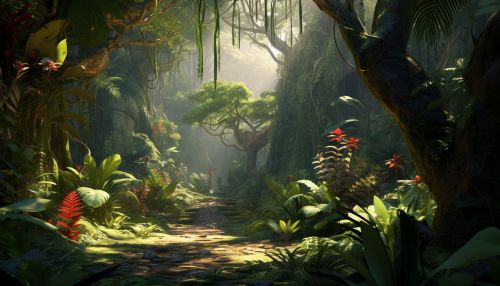Forest Ecology
Introduction
Forest ecology is the scientific study of the interrelated patterns, processes, flora, fauna, and ecosystems in forests. The discipline of forest ecology is centered around the understanding of the biodiversity and interactions between organisms and their environment within forested ecosystems.
Forest Types
There are three main types of forests that are recognized globally: tropical, temperate, and boreal forests.
Tropical Forests
Tropical forests are typically located near the equator. They are characterized by high rainfall and temperatures, with little seasonal variation. These forests are home to a diverse range of species, many of which are not found anywhere else in the world.


Temperate Forests
Temperate forests are found in regions with moderate rainfall and temperatures, and distinct seasonal changes. They are most commonly found in North America, Europe, and Asia. The vegetation in these forests varies greatly depending on the specific climate and soil conditions.
Boreal Forests
Boreal forests, also known as taiga, are found in regions with cold climates, including parts of North America, Europe, and Asia. These forests are dominated by coniferous trees and have a short growing season due to the cold temperatures.
Forest Ecosystem Processes
Forest ecosystems are complex and dynamic, with a variety of processes occurring at different scales. These processes include nutrient cycling, energy flow, and succession.
Nutrient Cycling
Nutrient cycling is a fundamental process in forest ecosystems. It involves the movement and exchange of organic and inorganic matter back into the production of living matter. This process is facilitated by various biotic and abiotic components of the ecosystem, including plants, animals, and microorganisms, as well as soil, water, and air.
Energy Flow
Energy flow refers to the way energy moves through a forest ecosystem. The primary source of energy in forest ecosystems is sunlight, which is captured by plants through the process of photosynthesis. This energy is then transferred through the ecosystem via the food chain.
Succession
Succession is the process by which the structure of a biological community evolves over time. In forest ecosystems, this often involves the gradual replacement of one plant community by another.
Forest Biodiversity
Forests are among the most biodiverse ecosystems on the planet. They provide habitat for a vast array of organisms, including trees, shrubs, herbs, birds, mammals, insects, fungi, and microorganisms.


Forest Conservation
Forest conservation involves the protection and management of forests to prevent deforestation and degradation, and to conserve biodiversity. This can involve a range of strategies, including the establishment of protected areas, sustainable forest management practices, and reforestation efforts.
